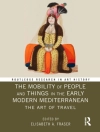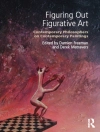In ‘The Seven Periods of English Architecture Defined and Illustrated, ‘ Edmund Sharpe offers a meticulous examination of English architectural styles from the Norman Conquest to the Gothic Revival. This seminal work is characterized by its clear, systematic delineation of architectural periods, accompanied by detailed illustrations that serve to enhance the reader’s understanding of each style’s unique features. Sharpe’s scholarship reflects the Victorian era’s burgeoning interest in historical architecture, situating the text within a context of both architectural theory and practice, as he seeks to foster an appreciation for England’s rich architectural heritage. Edmund Sharpe, a noted architect and antiquarian, was profoundly influenced by the prevailing Romantic ideals of his time, which emphasized a connection to the past and an appreciation of craftsmanship. His firsthand experience with architecture, coupled with his role as a member of the Cambridge Camden Society, positioned him well to create a work that not only documents but also celebrates the evolution of English architecture. Sharpe’s passion for the subject matter is evident in his thoughtful analysis and illustrative skill, showcasing his commitment to architectural education and heritage preservation. This book is an essential read for anyone interested in architecture, history, or the evolution of cultural identity in England. Sharpe’s authoritative voice and captivating revelations provide readers with a profound understanding of the aesthetic and academic significance of English architecture. Engaging for both scholars and enthusiasts, this work is a cornerstone text that transcends time, enriching our appreciation for the built environment.
Giới thiệu về tác giả
Edmund Sharpley (1809–1877) was a notable figure in the mid-19th century, whose contributions to the field of architecture and architectural history are still recognized today. Sharpe’s unparalleled expertise in the delineation of historical styles is best encapsulated in his seminal work ‘The Seven Periods of English Architecture Defined and Illustrated’ (1851), wherein he meticulously categorizes the evolution of English architectural design from the Anglo-Saxon era to the Perpendicular Gothic period. Sharpe’s literary style in this noteworthy book combines academic rigor with accessible prose, making it an indispensable resource for both scholars and enthusiasts of architectural history. As a pioneering architect of his time, Sharpe also contributed to the development of ecclesiastical architecture. His advocacy for the revival of Gothic architecture was influential in shaping the Neo-Gothic movement. Sharpe’s legacy is not merely limited to his written work; it also encompasses the architectural imprint he left through various church designs and restorations, demonstrating his commitment to the practical application of his historical insights. Although Sharpe’s work was specific to a bygone era, its enduring relevance is a testament to his profound understanding of the subject matter and his ability to systematize complex artistic evolutions. His classification scheme for English architecture provided a framework that continues to inform historical analyses of building styles within the architectural canon.












